Studios Say They Hate Piracy – but It Offers a Treasure Trove of Data | Charts
Media piracy is on the rise lately, as consumers facing a crackdown on password sharing and rising subscription costs turn to the illegal downloads known as torrents or unlicensed websites. That’s one more headache for streamers which are looking to bolster their profitability and retain subscribers.
Yet there’s an upside to piracy that few in the industry care to openly discuss: The information gleaned from illicit streaming and downloads can give a glimpse into consumer tastes, and potentially guide streamers to new audiences or programming. And since streamers tend to keep their own viewing figures closely guarded, piracy data can be one of the few ways to get a broad view of what people want to watch.
Each streamer’s internal subscriber data are “siloed to the people who have paid or are free trialing,” Andrew Chatterly, CEO of anti-piracy and market analytics tech firm Muso, told TheWrap. But piracy data offers a view of the entire world and their competitors in an “unsiloed, egalitarian playing field.”
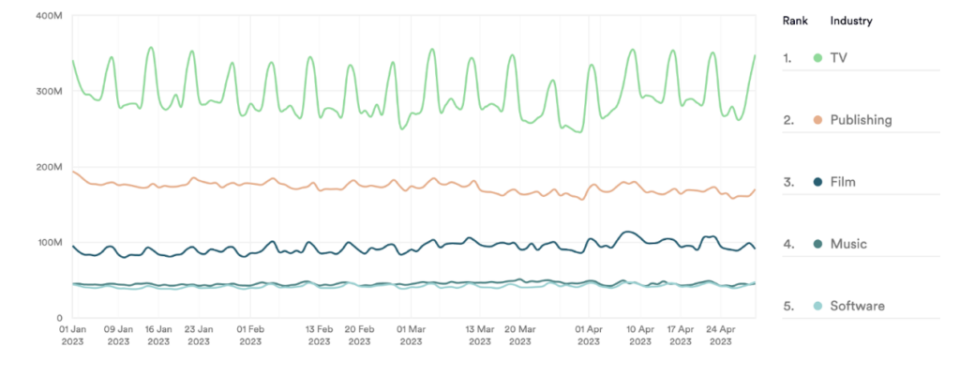
Netflix’s password-sharing crackdown, which only began in earnest in the U.S. in recent weeks, has put piracy back in the spotlight. The streamer has estimated that 100 million households globally are sharing passwords, including 30 million in the U.S. and Canada. Some have started to pay up as Netflix tightened usage controls, but customers who are not willing to cough up cash for their own subscriptions may just revert to the readily available, free option of torrents and illegal streaming sites.
The U.S. content and distribution sectors lose between $29 billion and $71 billion to piracy a year, a 2019 study by the U.S. Chamber of Commerce’s Global Innovation Policy Center found. The report adds that piracy also results in losses to the U.S. economy of between 230,000 and 560,000 jobs and between $47.5 billion and $115.3 billion in reduced gross domestic product (GDP) each year.
At least 3,500 storefront websites, social media pages, and stores within online marketplaces sell pirate subscription IPTV services to the U.S. market, which generate subscription revenues of $1 billion annually in the U.S. alone, according to a 2020 report by the Digital Citizens Alliance. (that’s right — some pirate services charge subscribers).
Also Read:
Why a Paramount+ and Showtime Combo Makes Sense for Subscribers | Charts
Muso measures daily consumption of roughly 500,000 film and TV titles across unlicensed streaming websites and torrents. It offers an anti-piracy dashboard to help regulators and law enforcement crack down on illegal site operators while also helping major media companies better inform their own content strategies by showing “true demand” for titles.
Getting a data edge
The two primary reasons people turn to piracy are because they can’t afford streaming subscriptions or because a particular service may not be available yet in their country, Chatterly said.
The proliferation of streaming services “has probably meant that it’s largely unaffordable for everybody to have everything,” which is a factor “driving piracy,” he added. “So in understanding what the audience actually wants to watch, they can better understand what to program.”
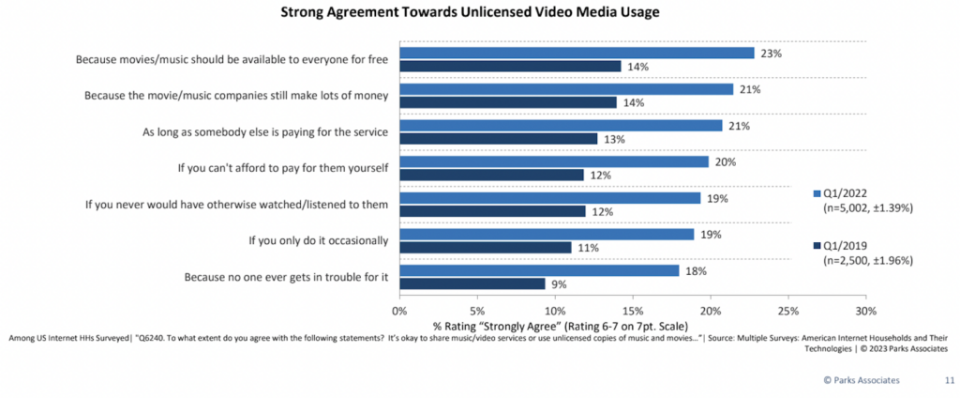
Roughly a quarter of consumers agree that pirating content is acceptable, according to a survey of consumer attitudes conducted by Parks Associates.
“Consumers are beginning to become more accepting of pirate and account-sharing activities, rationalizing these behaviors by strongly agreeing that entertainment should be publicly and freely available,” the firm notes. “They know someone else is paying for it, or because they believe that, even if others are pirating, companies are still making enough money that the loss is negligible.”
Piracy monitoring can do more than just prevent losses — it can also guide distribution decisions and test demand for content and new business models, Parks Associates said. One instance where Muso’s data may prove helpful is for acquiring rights to popular TV and film properties in countries or regions where they are not legally accessible, Chatterley noted.
A ready example: The show with the most illegal downloads or streams this year through late May was HBO’s “The Last of Us.” But seven out of the top 10 most-pirated titles were Japanese anime or South Korean K-drama. The most popular title in that category was “My Hero Academia” Season 6, with 22.8% of the global audience demand coming from the United States.
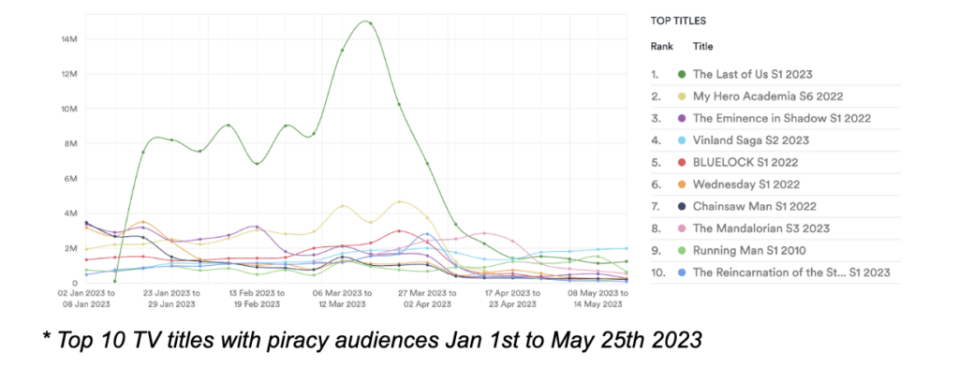
That title is available on Crunchyroll, a Sony-run streaming service specializing in anime which recently reached 10 million subscribers but remains much smaller than mainstream services.
Streamers have been bulking up their anime and K-drama offerings, but the piracy data suggests they could be more aggressive in meeting audience demand. That’s just one example of how companies could use insights from piracy behavior — and it illustrates that illegal downloading may be a response to the relative scarcity of specific content on mainstream streaming services, not just to price. The removal of popular shows from streaming services might also prompt viewers to try to download them instead.
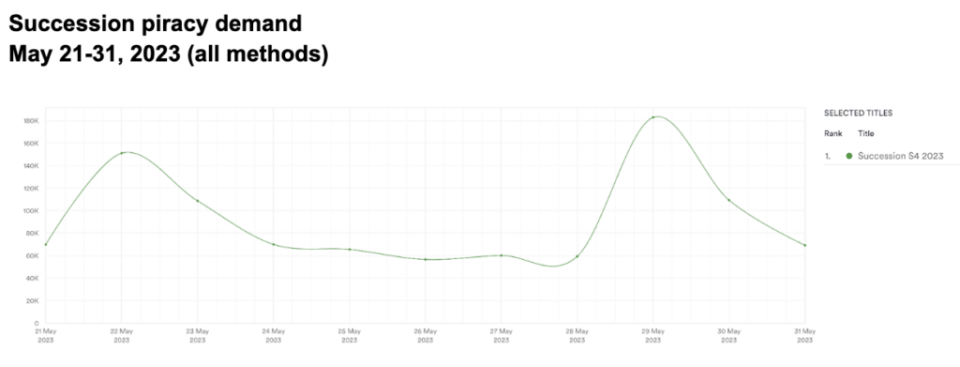
Hot shows available through relatively high-priced streaming services like Warner Bros. Discovery’s Max can also see considerable piracy activity. Visits to illegal streaming and torrent sites to watch HBO’s “Succession” spiked from a week average of nearly 65,000 to 180,000 on the day of the finale up from 150,000 for the penultimate episode.
Popular movies, on the other hand, seem to get illegally streamed or downloaded even when they’re relatively easy to stream through cheaper services like Disney+ and Peacock. Disney’s “Avatar: The Way of Water,” Universal’s “Puss in Boots: The Last Wish” and Marvel’s “Black Panther: Wakanda Forever” were the three most in-demand titles with piracy audiences. The “Avatar” sequel accounted for 21.6% of audience demand across the top 10 titles.
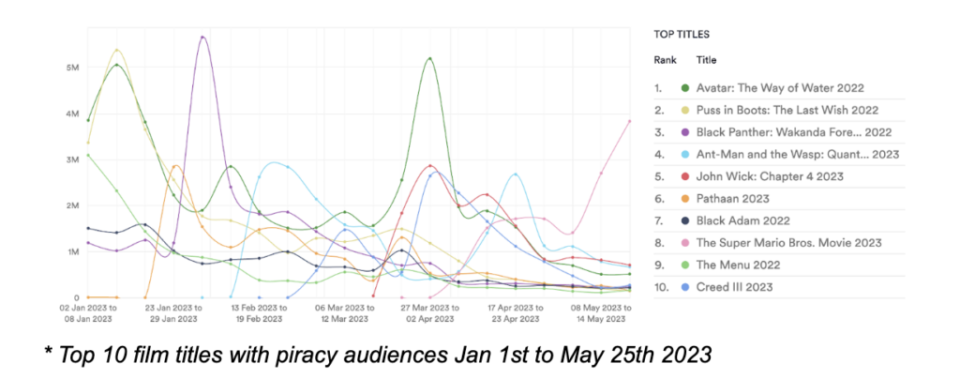
And sometimes piracy interest coincides with digital availability. “Puss in Boots: The Last Wish” saw its largest one-day spike on Jan. 8 with over 1.1 million illegal downloads and streams on the day alone. That was two days after it became available for purchase or rental on video on demand. It saw some smaller spikes in March after it became available on Peacock.
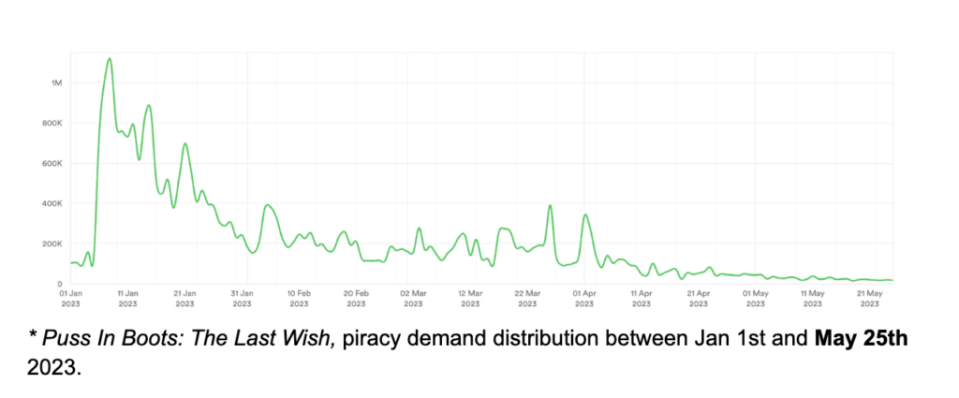
Fighting piracy while studying it
Few media companies talk publicly about piracy, but many have in-house content security teams and technology in place to flag suspicious activity and address it.
Studios generally referred questions to the Alliance for Creativity and Entertainment, an anti-piracy coalition with over 30 members, including Netflix, Disney, Hulu, Amazon, Paramount Global, Comcast Corporation, NBCUniversal, Warner Bros. Discovery, HBO, Fox and Apple TV+.
Jan van Voorn, the head of ACE and the Motion Picture Association’s executive vice president and chief global content protection, told TheWrap that the organization has made “significant strides in reducing piracy” since launching six years ago. In the U.S. alone, the number of piracy sites has dropped from 1,444 to 126, he said.
Also Read:
Can Super Bundles Save Streaming? | Analysis
Internationally, ACE has shut down major piracy operations in recent months, including France’s Extreme-Down, Shahed4U in the Middle East-North Africa region, Vietnam-based USTVGO and Germany-based Streamzz, an illegal file-hosting service used by more than 60 illegal piracy websites.
“Often, the average consumer of pirated content is unaware that they’re handing over sensitive information such as credit card numbers and bank account information to criminals,” said van Voorn. “Most commercial-scale piracy operations are not run by a lone hacker in their parents’ basement. They’re operated by global organized crime rings.”
Most consumers, he added, are less likely to turn to piracy once they understand the risks.
Illegal downloads still on the rise
Though ACE says piracy activity has declined, Parks Associates noted that both account sharing and consumption of pirated content have been on the rise, increasing 48% and 65% since 2019, respectively.
The firm estimates that piracy could cost streaming video providers serving U.S. consumers a cumulative $113 billion by the end of 2027.
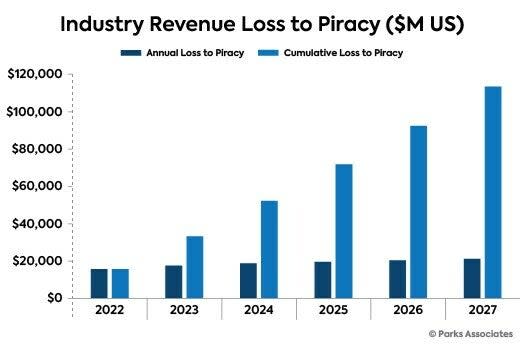
“While there is some optimism that emerging countermeasures and best-practices may see piracy begin to plateau by 2027, there is no consensus among stakeholders as to when it may begin to decline,” Parks Associates contributing analyst Steve Hawley said.
It’s still too early to tell how Netflix’s password-sharing crackdown will ultimately affect piracy. New data from Antenna released on Friday found that the streamer saw nearly 100,000 daily sign-ups on May 26 and 27, just days after alerting U.S. subscribers about the new controls on sharing, suggesting that many consumers might be willing to pay if prompted to do so.
Average daily sign-ups to Netflix reached 73,000 during that period, a 102% increase from the prior 60-day average. It exceeded the spike in sign-ups the firm observed during the beginning of COVID-19 lockdowns in March and April 2020.
Antenna collects data from third-party services including online purchase receipts, bills and banking records. Its data doesn’t include subscriptions offered through bundles, which could mean that Netflix drew even more new subscribers. Netflix, which revealed in May that its cheaper ad-supported tier had grown to nearly five million monthly active users globally, declined to comment.
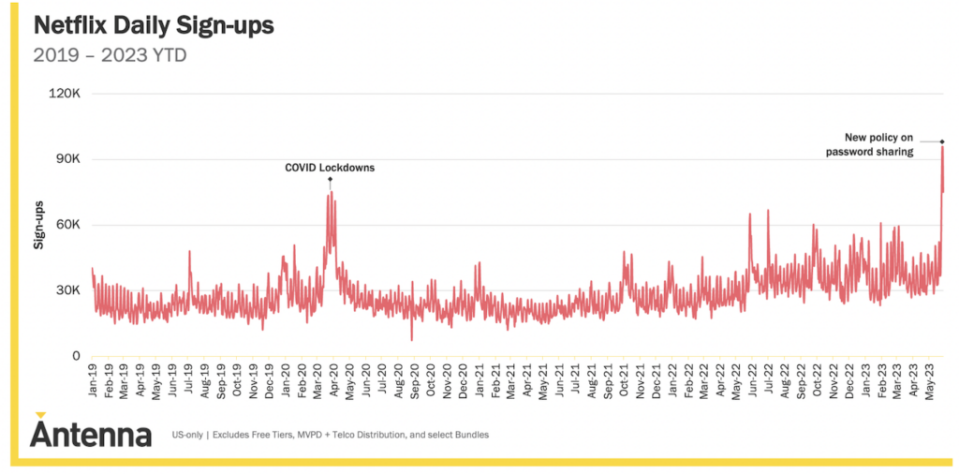
Chatterly acknowledged how destructive piracy has been to the entertainment industry, but warned against stigmatizing consumers of pirated content.
“The people who are uploading content, stealing content and making it available, I’d go along with calling those people ‘pirates,'” he said. “People who are consuming content on an unlicensed website are fans of content. And until we start changing the narrative towards that, we’re throwing away the value in that audience.”
Also Read:
‘Force Majeure’ Looms Over WGA Members as the Financial Pain of Suspended Deals Sets In

